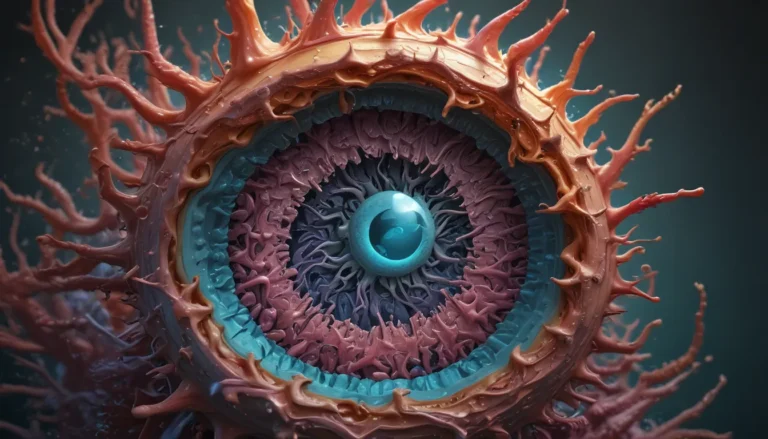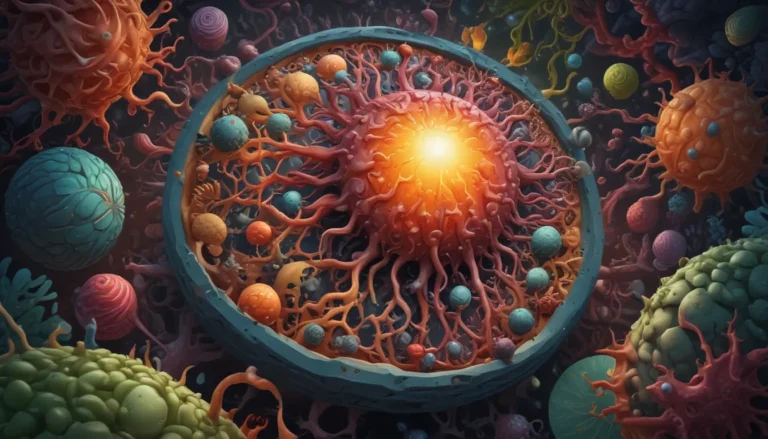A Note About Images: The images used in our articles are for illustration purposes only and may not exactly match the content. They are meant to engage readers, but the text should be relied upon for accurate information.
Radiometric dating is a captivating scientific method that has transformed our comprehension of the Earth’s history. By analyzing the decay of radioactive isotopes, scientists can determine the age of rocks and artifacts with unparalleled precision. This groundbreaking technique has provided valuable insights into geological time scales, evolutionary processes, and the age of ancient civilizations.
In this article, we will delve into 12 remarkable facts about radiometric dating that underscore its significance and influence. From unveiling the age of the Earth to unraveling the mysteries of human ancestry, radiometric dating has emerged as an invaluable tool in the realms of biology and geology. So, let’s embark on a journey to uncover the intriguing facets of this scientific approach.
Unveiling Earth’s Secrets: The Power of Radiometric Dating
- Radiometric dating serves as a time machine for Earth’s history, enabling scientists to determine the age of rocks and fossils by measuring radioactive isotopes.
- Beyond rocks, this method can track tectonic plate movement, predict volcanic eruptions, and unveil ancient climate changes, akin to a detective tool for Earth’s secrets.
Understanding Radiometric Dating: A Method to Reveal Earth’s Tale
Radiometric dating is a potent tool utilized by scientists to estimate the age of geological materials based on the proportions of specific radioactive isotopes present in the sample. It finds widespread application in fields such as archaeology, paleontology, and geology.
Carbon-14 Dating: Unraveling Earth’s Timeline
The most commonly employed radiometric dating method is carbon-14 dating, which hinges on the decay of carbon-14 isotopes in organic materials. By gauging the residual amount of carbon-14 in a sample, scientists can approximate its age.
Unveiling Earth’s Age: A Revelation through Radiometric Dating
Through the application of radiometric dating techniques, scientists have approximated the age of the Earth to be approximately 4.5 billion years. This revelation has offered vital evidence to bolster the theory of Earth’s ancient history.
The Diversity of Elements: A Spectrum of Radiometric Dating
Different radioactive isotopes exhibit varied half-lives, signifying the time it takes for half of the atoms in a sample to decay. This diversity enables scientists to utilize different isotopes to date materials spanning a range of ages.
Tracing Human History: Radiometric Dating and Ancient Artifacts
By dating the organic material unearthed in archaeological sites, scientists can ascertain the age of tools, pottery, and even ancient human remains. This affords valuable insights into our human history.
The Principle of Decay: The Foundation of Radiometric Dating
Radiometric dating operates on the premise of radioactive decay, wherein radioactive isotopes disintegrate over time, transitioning into more stable elements. By ascertaining the ratio of parent isotopes to daughter isotopes in a sample, scientists can ascertain the material’s age.
Uranium-Lead Dating: Estimating Earth’s Antiquity
Uranium-lead dating stands as one of the earliest radiometric dating methods utilized to determine the age of rocks within the Earth’s crust. This method relies on the decay of uranium isotopes into lead over exceedingly protracted periods.
Illuminating Plate Tectonics: A Radiometric Revelation
By dating rock formations flanking a fault line, scientists can compute the pace at which tectonic plates are in motion. This intelligence aids in comprehending the dynamics of Earth’s geology.
Rewinding Earth’s Climate: A Radiometric Retrospect
Through the examination of isotopic ratios in ice cores, scientists can reconstruct past climate conditions, traversing millions of years to unravel how Earth’s climate has evolved.
Predicting Volcanic Eruptions: A Radiometric Precursor
By scrutinizing the decay of radioactive isotopes beneath a volcano, scientists can estimate the duration since the last eruption, furnishing invaluable insights for forecasting future volcanic activities.
Evolution and Advancement: The Ever-Evolving Radiometric Dating
While radiometric dating methods boast exceptional reliability, factors such as sample contamination and dependence on certain assumptions can impact the accuracy of results. However, scientists persist in refining radiometric dating techniques through novel approaches and technological advancements to enhance accuracy and broaden its scope.
Radiometric Dating: A Timeless Legacy
Radiometric dating stands as a remarkable scientific technique that has reshaped our comprehension of Earth’s history. By scrutinizing radioactive isotopes, scientists can meticulously pinpoint the age of rocks, fossils, and geologic phenomena. The 12 extraordinary facts delineated in this article epitomize the reliability and versatility of this method.
From the inception of isotopes to the evolution of diverse radiometric dating techniques, scientists have persistently refined and enhanced this process. Radiometric dating has not only been instrumental in dating ancient artifacts and fossils but has also facilitated profound insights into geological processes, including the genesis of mountains and the trajectory of tectonic plates.
By mastering the tenets of radiometric dating, scientists have pieced together intricate timelines of Earth’s history, unearthed the enigmas of ancient civilizations, and deepened their comprehension of life’s evolution on our planet.
As knowledge burgeons and technology advances, radiometric dating will continue to play a pivotal role in unraveling the Earth’s past and sculpting our perception of the future.
FAQs: Navigating the Radiometric Realm
Q: What is radiometric dating?
A: Radiometric dating is a scientific technique employed to ascertain the age of rocks, fossils, and archaeological artifacts by analyzing the decay of radioactive isotopes.
Q: How does radiometric dating work?
A: Radiometric dating relies on the principle that certain isotopes decay at a consistent rate over time. By gauging the ratio of parent isotopes to daughter isotopes in a sample, scientists can calculate the material’s age.
Q: Is radiometric dating accurate?
A: Radiometric dating exhibits high accuracy when judiciously applied under suitable conditions. The method’s reliability hinges on factors such as the stability of the isotopes being measured, sample size, and precise instrument calibration.
Q: What are some common isotopes used in radiometric dating?
A: Common isotopes employed in radiometric dating encompass carbon-14, uranium-235, uranium-238, potassium-40, and rubidium-87.
Q: Can radiometric dating be applied to all materials?
A: Radiometric dating is predominantly used on rocks, minerals, and fossils, although its applicability extends to diverse materials like ice cores and archaeological artifacts.
Q: How far back can radiometric dating be utilized?
A: Radiometric dating can discern the age of materials spanning millions to billions of years, contingent on the half-life of the isotopes under evaluation.
Q: Can radiometric dating appraise Earth’s age?
A: Yes, radiometric dating has been instrumental in gauging the Earth’s age, approximated at around 4.5 billion years.
Q: What are some limitations of radiometric dating?
A: Limitations of radiometric dating encompass potential sample contamination, the existence of daughter isotopes upon formation, and challenges in accurately determining the inaugural isotopic ratios.
Q: Can radiometric dating be employed to date historical events?
A: Radiometric dating is generally unsuitable for dating events within human history, favoring geological timescales. For events within the past few millennia, alternative dating methods like carbon-14 dating are more commonly employed.
Q: How has radiometric dating enriched our comprehension of evolution?
A: Radiometric dating has furnished pivotal evidence regarding the evolution timeline and fossil ages, enabling scientists to craft intricate evolutionary frameworks and decipher the interrelations among diverse species.
Q: Can radiometric dating ascertain the universe’s age?
A: Radiometric dating does not ascertain the universe’s age. Instead, the universe’s age is approximated through methodologies like cosmic background radiation and stellar evolution analysis.
Engage with radiometric dating to uncover Earth’s ancient tales and unravel mysteries spanning millennia. Delve into the captivating realm of isotopes and decay, where each revelation sheds light on the hitherto unknown facets of our planet’s past. Trust in the integrity and authenticity of radiometric dating as it guides us on an expedition through time’s labyrinthine corridors.






